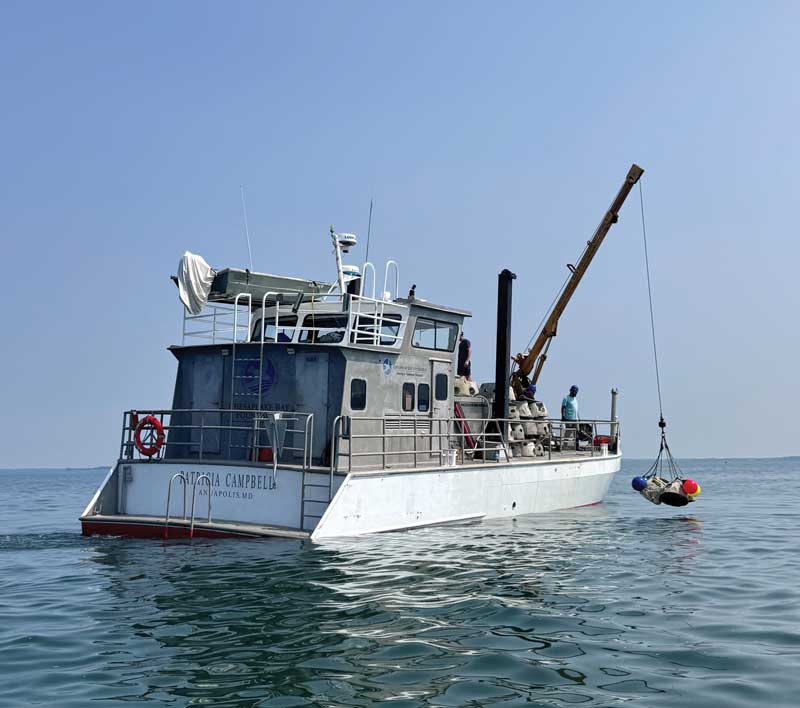On June 11, the Chesapeake Bay Foundation (CBF) oyster crew headed to the Choptank River aboard the Patricia Campbell to deploy 200 oyster reef balls at the Clint Water’s Memorial Reef at Cook’s Point. These reef balls were constructed by volunteers and students at various events hosted by the Coastal Conservation Association of Maryland (CCA MD) as part of its oyster restoration program, the Living Reef Action Campaign. These efforts are also in cooperation with the Department of Natural Resources Maryland Artificial Reef Initiative. CBF began placing reef balls set with oyster spat at the Clint Water’s reef in 2008 and since then have periodically added more balls to this two-acre site. Capt. Karl Willey and the CBF oyster team use GPS to strategically lower each ball.

This new habitat hosts a variety of fish species including rockfish, white perch, silver perch, spot, flounder, oyster toadfish, and much more. The location of the Clint Water’s reef can be found on most GPS chartplotters, and the coordinates can be found at dnr.maryland.gov.
Building reef balls is a two-day process that involves mixing and pouring concrete into a fiberglass mold with inflatable balls to create various openings. Once hardened, a reef ball can weigh up to 250 pounds. CCA reef balls are typically produced by students in STEM programs throughout the state that encourage environmental stewardship. Being part of the creation of these reef balls helps our future generations understand the importance of oysters in the Chesapeake Bay ecosystem.
The Clint Water’s Reef is just one of many sites where CBF has been deploying oyster habitat since 1996. In the summer of 2024, 600 reef balls were dropped on Horseshoe Point on the St. Mary’s River. Another ongoing project is Noah’s reef on the Magothy River, built as a memorial to Noah Anderson, as an addition to the Dobbin’s Island reef site. Find a map of all the Maryland artificial reef sites at cbf.org.
To learn more about the Living Reef Action Campaign and how you can get involved, visit ccamd.org.
By Zach Ditmars